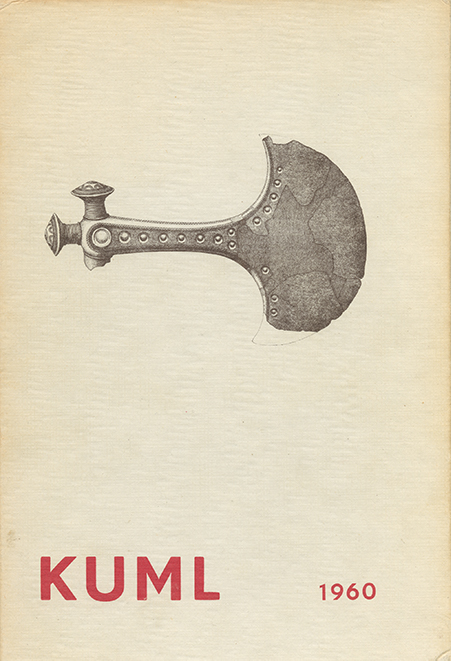Johannes brøndsted
DOI:
https://doi.org/10.7146/kuml.v10i10.103103Keywords:
Johannes Brøndsted, birthday, fødselsdag, 70Abstract
JOHANNES BRØNDSTED
A fruitful period shone forth for Danish archeology when Johannes Brøndsted in 1933 became the head of the First Department of the National Museum and threw wide the barred portals to the treasures of prehistory. He had himself long lived behind those closed walls, but there he had prepared a new epoch in the investigation of our country's prehistory. With that his name will always be connected, together with those of his great predecessors, Thomsen, Worsaae and Müller. It was Brøndsted who reestablished the connection between museum and university which was broken when Worsaae ended his university career in 1865. He had lectured on Denmark's prehistory since 1928, and now he could supplement the theoretical tuition of his students with a practical training at the National Museum and at excavations in the field. And while Brøndsted gave new generations of archeologists a broad-based open-minded education, he at the same time addressed a wider public through the written word, intensifying interest in archeology by his lively presentation in both popular articles and longer works. The roll of his scientific and popular publications will not be called here. It is summed up in "Danmarks Oldtid", a unique work giving as much of value to the lay reader as to the prehistorian. That a new, revised and expanded edition of "Danmarks Oldtid" had to be issued after only 20 years reflects both the living general interest in the prehistory of our country and the expansion of the scale of research. Both are in the main the results of Brøndsted's work.
It was perhaps fortuitous that Johannes Brøndsted's career came to lie within the field of prehistoric archeology. One day in 1916 he was sought out at Eler's College by the director of the National Museum, Sophus Müller, who authoritatively urged him to complete his examination in classical philology, as he desired his appointment to the museum. Sophus Müller can hardly have been aware that he was then choosing his successor as the moving spirit in our domestic archeology, a coming director of the National Museum. The following year Brøndsted was at work in the prehistoric department, and was there entrusted by Müller with the publication of the silver beaker from Ribe, which resulted in his doctorate thesis "Nordisk og fremmed Ornamentik i Vikingetiden" (translated as "Early English Ornament" 1924), which first made his name internationally known.
With the tenth volume of KUML the Jutland Archeological Society brings its homage to the State Antiquary, Johannes Brøndsted on the seventieth anniversary of his birth in Grundfør in that Jutland, "the wide and goodly'', to which so much of his life's work has been devoted.
P. V. Glob.
Downloads
Published
How to Cite
Issue
Section
License
Fra og med årgang 2022 er artikler udgivet i Kuml med en licens fra Creative Commons (CC BY-NC-SA 4.0).
Alle tidligere årgange af tidsskriftet er ikke udgivet med en licens fra Creative Commons.


